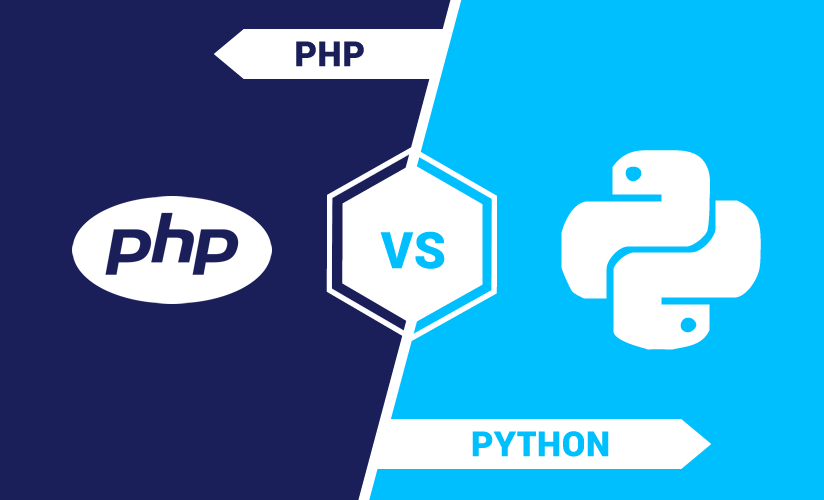The Future of Mobile Development: React Native vs. Native Android/iOS

Mobile development has witnessed a monumental shift over the years, with the advent of innovative frameworks and technologies aimed at simplifying the app development process. React Native and Native Android/iOS are two prominent approaches that developers can choose to build their mobile applications. In this comprehensive blog, we will explore the key differences, advantages, and challenges of each approach, and discuss their potential roles in the future of mobile development.
Understanding React Native and Native Android/iOS 
Mobile application development has become a cornerstone of the digital age, revolutionizing the way people interact with technology and conduct their daily activities. With the proliferation of smartphones and the increasing demand for mobile apps, developers are constantly exploring new technologies to streamline the app development process and deliver feature-rich, user-friendly applications. Among the various approaches available, React Native and Native Android/iOS have emerged as two popular choices, each offering distinct advantages and use cases.
- React Native: React Native is a powerful open-source mobile application framework developed by Facebook. It first appeared in 2015 and quickly gained traction in the developer community due to its unique approach to cross-platform development. The framework allows developers to build mobile applications for both Android and iOS platforms using a single codebase written in JavaScript and the popular React library.
The core principle behind React Native is “Learn once, write anywhere.” This means that developers can write code once and reuse it across both Android and iOS platforms, saving significant development time and resources. Instead of creating separate codebases for each platform, React Native leverages native components and APIs to render user interfaces, making it easier to create applications that feel and behave like native ones.
- Native Android/iOS: Native development, on the other hand, involves building mobile applications natively for each platform—Android and iOS—using platform-specific languages and development tools. For Android, developers primarily use Java or Kotlin in conjunction with Android Studio, while for iOS, they use Swift or Objective-C alongside Xcode.
Native development offers a high degree of control over the application’s behavior, performance, and user interface. By directly interfacing with the underlying platform’s APIs, developers can optimize the app for a specific platform and take full advantage of the device’s hardware and software capabilities. This results in native apps that provide superior performance, seamless user experience, and seamless integration with platform-specific features.Now, let’s delve deeper into the advantages and limitations of both React Native and Native Android/iOS.
Advantages of React Native
- Cross-Platform Compatibility: The most prominent advantage of React Native is its ability to create cross-platform applications. With a single codebase, developers can target both Android and iOS platforms, reducing development time and ensuring feature parity across devices.
- Fast Development and Hot Reloading: React Native offers a hot-reloading feature, allowing developers to see real-time changes in the app without restarting the entire development server. This rapid feedback loop significantly accelerates the development process and enhances developer productivity.
- Large Community and Ecosystem: React Native boasts a massive and active community of developers, which translates into extensive support, frequent updates, and a vast array of third-party libraries and plugins. Developers can tap into this ecosystem to address various development challenges efficiently.
- Cost-Effectiveness: By enabling code reuse, React Native can lead to cost savings, especially for businesses and startups looking to develop applications for multiple platforms while maintaining a lean development team.
Limitations and Challenges of React Native
- Performance: While React Native has made significant strides in improving performance, it may not match the raw performance of native apps, especially for computationally intensive tasks or graphics-intensive applications.
- Native Module Integration: For certain features or functionalities not supported by React Native out-of-the-box, developers may need to integrate platform-specific native modules, which can add complexity and require a deeper understanding of native development.
- Dependency on Native Updates: React Native applications depend on native modules, and developers need to stay updated with the latest changes in the underlying platforms to ensure compatibility and security.
Advantages of Native Android/iOS
- Performance: Native apps, developed specifically for each platform, can leverage platform-specific optimizations and APIs, resulting in superior performance and faster execution.
- Access to Platform-Specific Features: Native development provides direct access to platform-specific features, sensors, and hardware, enabling developers to create highly customized and sophisticated applications.
- Better UI/UX Design: Native apps conform to the respective platform’s design guidelines, providing a more native and intuitive user interface. This adherence to platform standards can lead to increased user engagement and satisfaction.
- Security and Stability: By adhering closely to platform-specific security measures and guidelines, native apps tend to be more secure and stable compared to cross-platform solutions.
Limitations and Challenges of Native Android/iOS
- Development Time and Cost: Building separate native apps for Android and iOS can lead to longer development cycles, higher development costs, and the need for dedicated resources for each platform.
- Skill Set Requirements: Developers need to have expertise in platform-specific languages and tools, which can add complexity to hiring and training processes.
The Future of Mobile Development 
The landscape of mobile development has witnessed tremendous growth and innovation over the years. As technology continues to advance and user expectations evolve, the future of mobile development is poised to bring forth exciting possibilities and transformative changes. In this section, we will explore some of the key trends and developments that are shaping the future of mobile app development.
5G Connectivity and Edge Computing: The rollout of 5G networks will be a game-changer for mobile development. With speeds up to 100 times faster than 4G, 5G will enable seamless data transfer and real-time communication, facilitating the integration of advanced technologies like augmented reality (AR), virtual reality (VR), and mixed reality (MR) into mobile applications. This, in turn, will revolutionize industries such as gaming, entertainment, healthcare, and education, providing users with immersive and interactive experiences like never before.
In addition to 5G, the emergence of edge computing will further enhance app performance and responsiveness. Edge computing processes data closer to the end-user, reducing latency and network congestion. Mobile apps will leverage edge computing to deliver faster response times and optimize data usage, especially for real-time applications and services.
The combination of 5G and edge computing will open up new avenues for mobile developers to create cutting-edge applications that push the boundaries of user experiences and deliver real-time information and services.
- Internet of Things (IoT) Integration: The Internet of Things (IoT) has expanded exponentially in recent years, connecting an array of smart devices and sensors. Mobile apps will play a pivotal role in managing and interacting with these IoT devices, transforming smartphones into powerful hubs for controlling and monitoring the connected world. From smart homes and wearable devices to industrial IoT applications, mobile apps will provide users with seamless access and control over their IoT ecosystems.
Developers will need to focus on creating secure and scalable mobile apps that can efficiently communicate with various IoT devices, ensuring interoperability and a seamless user experience. The integration of IoT with mobile development will pave the way for innovative solutions that enhance automation, efficiency, and convenience across industries.
- Artificial Intelligence (AI) and Machine Learning (ML): AI and ML are poised to revolutionize mobile development by enabling apps to offer personalized experiences, predictive capabilities, and intelligent automation. AI-powered virtual assistants like Siri, Google Assistant, and Alexa have already become an integral part of our daily lives. In the future, mobile apps will leverage AI and ML to understand user preferences, behaviors, and patterns, tailoring content and services to meet individual needs.
Natural Language Processing (NLP) will play a crucial role in enhancing voice interactions and enabling more natural conversations with virtual assistants. Additionally, computer vision algorithms will empower apps with powerful image and object recognition capabilities, unlocking new possibilities for AR-based applications, object detection, and visual search.Moreover, ML-powered app optimization and predictive analytics will enable developers to analyze user data, anticipate user needs, and optimize app performance continuously. These data-driven insights will drive user engagement, retention, and overall app success.
- Progressive Web Apps (PWAs): Progressive Web Apps (PWAs) represent a new approach to web development that bridges the gap between web and mobile applications. PWAs offer the benefits of both web and mobile apps, providing a native app-like experience without the need for installation. Users can access PWAs through web browsers, and the apps can be installed on the device’s home screen for quick access.
PWAs offer several advantages, including fast loading times, offline functionality, and push notifications. They eliminate the need for app store submissions and updates, simplifying the distribution process for developers. With a single codebase, developers can reach a broader audience across different platforms and devices, making PWAs an attractive choice for businesses aiming to improve user engagement and accessibility.As the technology matures, PWAs will become more prevalent, transforming the mobile app landscape and challenging the traditional native app model.
- Low-Code/No-Code Development: The demand for mobile apps is consistently growing, but the supply of skilled developers remains limited. To address this gap, low-code and no-code development platforms are gaining popularity. These platforms empower non-technical users to create functional apps with minimal coding knowledge, accelerating the app development process and democratizing access to mobile technology.
Low-code platforms provide a visual development environment, allowing users to drag and drop pre-built components to design app interfaces and workflows. No-code platforms take this concept further by abstracting coding entirely, allowing users to create apps using intuitive graphical interfaces and pre-configured templates.While low-code/no-code platforms are unlikely to replace traditional development entirely, they will play a significant role in expediting app development for specific use cases and empowering citizen developers to contribute to the app development process.
- Enhanced Security Measures: As mobile apps increasingly handle sensitive user data and transactions, security will remain a paramount concern for both users and developers. Cybersecurity threats and data breaches have become more sophisticated, necessitating robust security measures within mobile applications.
Developers will need to adopt encryption techniques, two-factor authentication (2FA), and biometric authentication methods to ensure data privacy and protection. Secure coding practices and regular security audits will become standard procedures in mobile development workflows.In addition to traditional security measures, blockchain technology will find applications in mobile app development. Blockchain’s decentralized and immutable nature can enhance the security of transactions, identity verification, and data storage, ensuring a higher level of trust and transparency within mobile applications.
- Voice-Activated Apps: The rise of voice-activated virtual assistants like Siri, Google Assistant, and Alexa has spurred a surge in voice-controlled applications. Voice interfaces provide a hands-free and intuitive way for users to interact with their devices and access information.
Mobile apps will increasingly integrate voice interfaces to enable users to perform tasks, access content, and control devices through natural language commands. Voice-controlled apps will be particularly beneficial in scenarios where hands-free interactions are essential, such as while driving or cooking.To fully capitalize on the potential of voice-activated apps, developers will need to ensure accurate voice recognition, natural language understanding, and seamless integration with other app functionalities.
- Multi-Experience Development: Mobile apps are no longer limited to smartphones and tablets. The future will witness the proliferation of multi-experience development, where apps are designed to work seamlessly across various devices and form factors. Smart TVs, smartwatches, wearable devices, and IoT-enabled devices will become integral parts of the mobile app ecosystem.
Developers will need to adopt a multi-experience development approach, considering different screen sizes, input methods, and device capabilities. This entails creating adaptive and responsive app designs that deliver consistent user experiences across various devices.Multi-experience development will lead to more immersive and interconnected user experiences, allowing users to seamlessly transition between different devices while maintaining continuity in their digital interactions.
- Sustainability and Green Initiatives: As environmental consciousness grows, the mobile development industry will emphasize sustainable practices. Mobile devices consume significant energy, and data centers that support app backends contribute to carbon emissions. Developers will need to address these challenges by optimizing energy consumption and reducing data usage in their apps.
Implementing dark mode options, optimizing images and media, and adopting data compression techniques can contribute to reducing app energy consumption. Additionally, utilizing serverless architectures and cloud-based resources can improve energy efficiency by reducing the reliance on physical infrastructure.Green initiatives within mobile development will not only support environmental sustainability but also resonate positively with users who value eco-friendly and socially responsible practices.
Conclusion
Both React Native and Native Android/iOS have their unique strengths and weaknesses. React Native is an excellent choice for projects that demand cross-platform compatibility and faster development cycles, especially for startups and smaller teams. On the other hand, Native Android/iOS offers better performance, direct access to platform-specific features, and adherence to platform guidelines, making it ideal for complex and high-performance applications.
The future of mobile development is likely to involve a combination of these approaches, as developers seek to strike a balance between cost-effectiveness, development speed, and app performance. Ultimately, the choice between React Native and Native Android/iOS will depend on the specific requirements and goals of each mobile project.
Similar Posts

10 Best .NET Development Practices: A Guide to Secure and Efficient Coding in 2025
Do you know, that developing an application is critical? Because, in case anything goes wrong in the dot net development or coding processes, the entire business metrics can fall. Oops, that’s saddening! That’s why it is essential to follow useful .NET development best practices while building software or applications. In fact, you need to consider […]...

Python vs PHP – Which One is Better?
Due to the fact that pretty much every business now needs an online presence, they also need those who can work with back-end development. This is as true for working with mobile apps as it is with websites. This makes those who have the skills necessary to work with programming tools like Python or PHP […]...

Node.JS Vs Python: Pick the Best Backend Technology in 2022
The battle between Node.js and python for the best backend technology is always on. One is old and established while the other one is new and trending. Which will win the war? Let’s dive in. Picking the right technology stack is pivotal for a web application project. The frontend and backend technology combination decides the project cost, […]...









